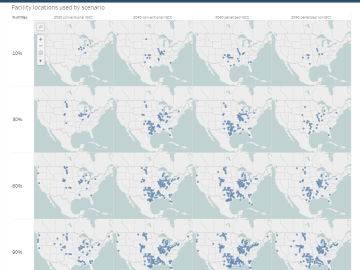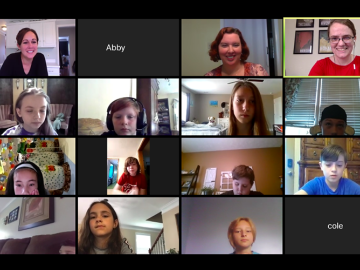
Filter News
Area of Research
- (-) Nuclear Science and Technology (5)
- Advanced Manufacturing (5)
- Biology and Environment (61)
- Building Technologies (2)
- Computational Biology (1)
- Computational Engineering (3)
- Computer Science (16)
- Electricity and Smart Grid (1)
- Energy Science (140)
- Energy Sciences (2)
- Functional Materials for Energy (2)
- Fusion and Fission (10)
- Fusion Energy (2)
- Isotopes (2)
- Materials (91)
- Materials for Computing (16)
- Mathematics (1)
- National Security (25)
- Neutron Science (31)
- Quantum information Science (7)
- Supercomputing (128)
News Type
News Topics
- (-) Computer Science (2)
- (-) Physics (2)
- 3-D Printing/Advanced Manufacturing (4)
- Advanced Reactors (11)
- Bioenergy (1)
- Biomedical (2)
- Coronavirus (1)
- Cybersecurity (1)
- Environment (1)
- Fusion (8)
- Isotopes (5)
- Materials Science (3)
- Molten Salt (4)
- Neutron Science (5)
- Nuclear Energy (36)
- Space Exploration (5)
Media Contacts

The combination of bioenergy with carbon capture and storage could cost-effectively sequester hundreds of millions of metric tons per year of carbon dioxide in the United States, making it a competitive solution for carbon management, according to a new analysis by ORNL scientists.

With Tennessee schools online for the rest of the school year, researchers at ORNL are making remote learning more engaging by “Zooming” into virtual classrooms to tell students about their science and their work at a national laboratory.

As a teenager, Kat Royston had a lot of questions. Then an advanced-placement class in physics convinced her all the answers were out there.

The Department of Energy’s Oak Ridge National Laboratory is collaborating with industry on six new projects focused on advancing commercial nuclear energy technologies that offer potential improvements to current nuclear reactors and move new reactor designs closer to deployment.

After more than a year of operation at the Department of Energy’s (DOE’s) Oak Ridge National Laboratory (ORNL), the COHERENT experiment, using the world’s smallest neutrino detector, has found a big fingerprint of the elusive, electrically neutral particles that interact only weakly with matter.


